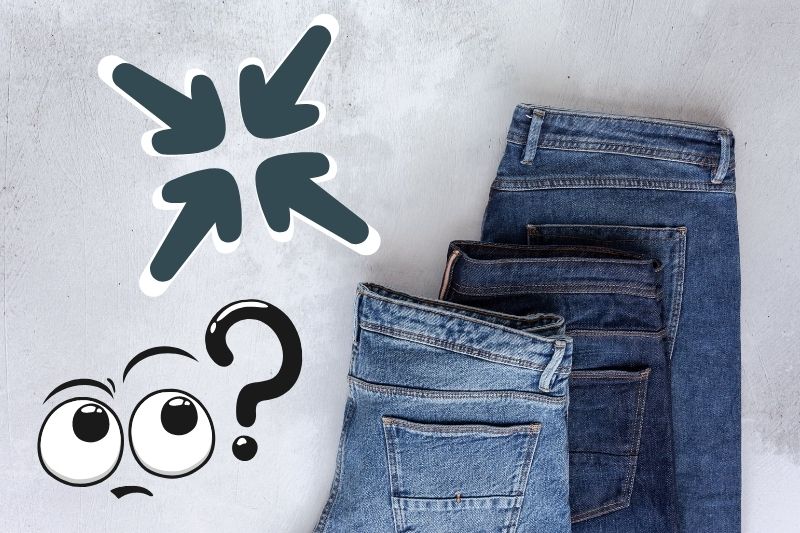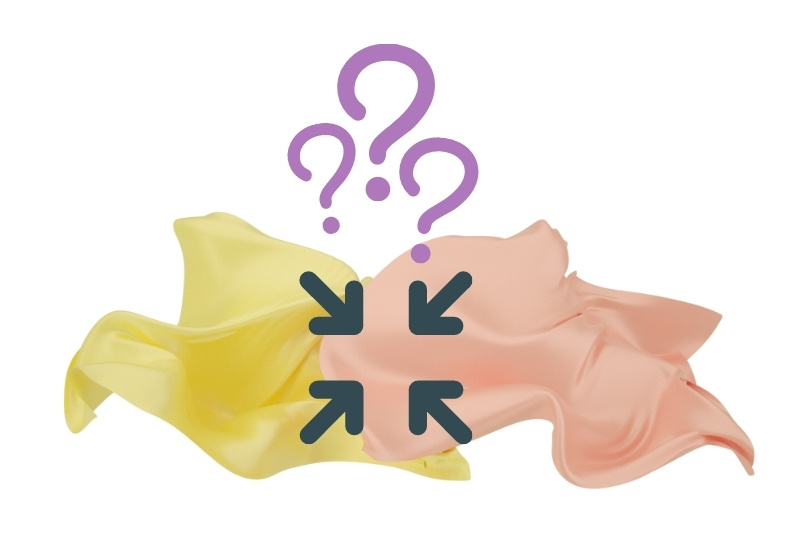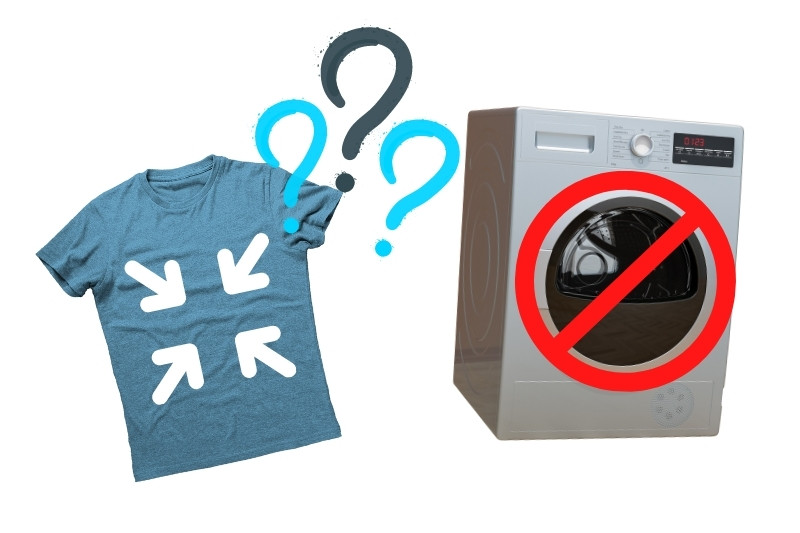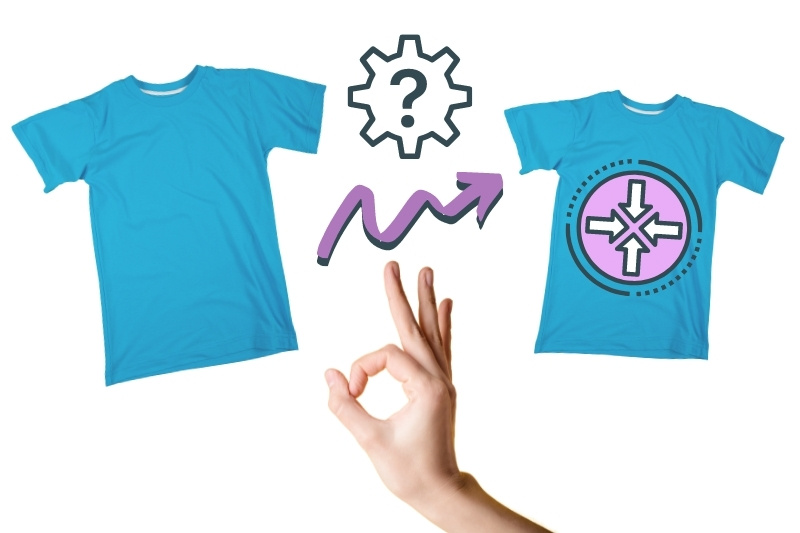While most of us try not to shrink clothes, there are times when shrinking clothes on purpose is essential!
For example, you’ve waited weeks for a t-shirt to come down in price, only to find they’re sold out of your size when you make it into the store. In the end you decide to buy the next size up because you don’t want to have had a wasted journey. But, of course, the t-shirt in the bigger size doesn’t have the desired effect, so you need to make it smaller.
Shrinking is the way forward!
So, how do you intentionally go about shrinking clothes? Keep on reading and I’ll explain how.
Some Tips to Think About
Here are a few tips to consider before you attempt to shrink your clothes.
- There isn’t a “one shrinking method fits all”. When you’re going to purposely shrink an item of clothing, you must shrink it according to what it’s made out of.
- Think about how much you actually need to shrink the item before starting the shrinking process. If the shrinking exercise goes wrong, you’ll have to find out how to unshrink your clothes!
- You may need to shrink some clothes more than once to get them to the desired size.
- You may need to purchase a mesh wash bag before you attempt to shrink some materials, like silk.
- When shrinking clothes, you’ll have to keep an eye on them throughout the process.
- Both the washing cycle and the drying cycle will play a part in the shrinking process.
- Some clothes, like ones made from polyester, may take a while to shrink, and others will shrink in no time at all.
- Keep in mind that not all clothes shrinking sessions run to plan. In fact, sometimes trying to shrink some items may actually ruin them, for example, a garment may not shrink uniformly.
- Always read the tags on your clothes before you attempt any of the methods below.
- In some cases, the shrinking methods below may cause dyes to run.
What Causes Clothes to Shrink?

Clothes typically shrink because of three reasons: felting, relaxation and consolidation. Let’s take a look at each of these in more detail.
Felting
Felting usually happens to clothes that are made from animal fibres. The reason why this type of shrinking occurs is because clothes made up of animal fibres usually have little scales all over them. When these scales get caught up in hot water and high heat they start to compress together in a mat-like form. This eventually leads to the entire piece of clothing shrinking in size.
Clothes likely to be impacted by this are: wool and cashmere.
Relaxation
This is when the material mixes with hot water, and the heat helps to undo the tension in the material that was created during the manufacturing phase. In the end the dimensions of the garment have changed because it has become ‘relaxed’.
Clothes likely to be impacted by this are: silks and cottons.
Consolidation
Consolidation shrinkage occurs when an item is exposed to a high water temperature, agitation and high heat. When these three factors work together, they effectively reverse the stretching phase that the items of clothing went through when they were being made. Clothes often end up looking a little different and smaller after this type of shrinkage has taken place.
Clothes likely to be impacted by this are: t-shirts.
How to Shrink Clothes on Purpose
When it comes to actively shrinking clothes you’ve got to choose the right shrinking method for the material you’re going to be working with. What do I mean by this? In short, different materials need to be shrunk in different ways, so don’t assume your polyester top can be shrunk in the same way as your woollen jumper!
Below I’ll outline how to shrink different materials:
Shrinking denim, cotton and polyester (synthetic) clothes on purpose

If you need to shrink hard wearing materials like denim, cotton and polyester you should follow the steps below. However, it’s worth keeping in mind that shrinking clothes, no matter how tough they are, doesn’t always work out, so be careful.
Steps you need to follow:
- Pop the items of clothing you would like shrunk into the washing machine – remember you can only put in denims, cottons and polyester clothes.
- Set your washing machine up to do a very hot wash – using hot water, and high temperatures in general, works wonders when it comes to shrinking items of clothing.
- Set your washing machine up to do the longest cycle possible – using the longest cycle possible means that the clothes are exposed to higher temperatures for longer.
- Once the washing machine stops, remove the clothes and put them into a tumble dryer.
- Set the tumble dryer up to dry your items at the highest temperature possible.
- You will need to choose another long cycle – the long drying process allows for more agitation to occur which helps to shrink the items.
- Continue to dry the clothes in the dryer if they are still wet – avoid putting the clothes on the line to dry because this natural environment will be too cold for the clothes, and will prevent them from shrinking.
Note: If you need to shrink items made from polyester or synthetics you will likely have to repeat the steps above multiple times. Polyester, and other synthetics, are tough materials that can take a while to shrink. You can find out more about shrinking polyester clothes in our article.
Shrinking silk clothes on purpose

Silk is a very delicate material that you’ve got to be careful with when you’re washing it. So, it’ll come as no surprise to hear that you need to be extra, extra cautious when you’re shrinking it.
Steps you need to follow:
- Pop your silk items into a mesh bag – a mesh bag is useful because it helps to protect the delicate silk material when it’s being agitated in the washing machine. You can pick up mesh washing bags from most supermarkets and online. If you’re not sure what to look out for, the Korbond Washing Machine Bag is ideal for the job! These bags come in two different sizes, they’re suitable for delicate materials and underwear, and they can be used at temperatures as high as 40℃.
- Pop the mesh bag into the washing machine.
- Choose a delicate wash setting, or pick the lowest heat setting possible, on your washing machine – a low temperature is more than enough to shrink this delicate material.
- Choose the shortest cycle too – there’s no need for your silks to endure a long cycle!
- You can add in a mild detergent if you like, but this isn’t actually essential.
- It is worth keeping an eye on your silk items during the wash cycle. If it’s possible, you should remove the silk items from the washing machine half way through a cycle to check them over.
- When the cycle is nearly finished, lay out a towel on a flat surface near the appliance.
- When the cycle has finished remove the silk items and place them one by one on the towel.
- Wrap one item up at a time in the towel – removes excess moisture and repeat for your other silk garments.
- There shouldn’t be any wringing or stretching of the material as this will damage it.
- Grab a hanger and pop one silk garment onto it – repeat this step for your other silk items.
- Allow your items to air dry naturally in your home – but do not hang your silk items up in direct sunlight.
- When the items are nearly dry you might like to consider drying them in a tumble dryer – you must choose a delicate setting, the shortest cycle (five minute cycles is best) and the lowest heat possible.
- You may need to repeat the method above to shrink your silk items further.
Shrinking wool and cashmere clothes on purpose (animal fibres)
If you need to shrink clothes that are made from animal fibres, items like wool or cashmere jumpers, you must be extremely careful because these materials are susceptible to shrinking very quickly.
Steps you need to follow:
- Grab your items and pop them into the washing machine.
- Choose a delicate setting or a low heat setting to wash these items of clothing on – heat and water help the scales to mat together, and this, in turn, causes shrinking.
- You need to make sure that a short cycle has also been selected – animal fibres react to heat and water very quickly, so they’re likely to shrink rapidly too.
- When the cycle has ended remove the items and pop them into the tumble dryer.
- As with the washing machine, you will need to choose a low heat and short cycle on the tumble dryer.
- You will need to make sure that the clothes have enough room to move around inside the machine, because you want the items to shrink uniformly.
- Pause the cycle regularly throughout the drying phase to check the garments over.
- Continue to do this until the items have been shrunk enough and have dried properly.
Shrinking leather clothes on purpose
Leather is a material that starts to look a little aged when it’s been worn over and over again. In some cases, it may even have stretched a little too much. While shrinking these items may seem like an option, I don’t recommend this.
Why? Leather clothes are usually pretty expensive to buy, so why would you want to risk damaging the costly items to begin with.
In addition to this, a lot of people do wash leather items at home, even though most clothing tags state that the items should be ‘dry-clean only’, shrinking clothes made from leather is a completely different activity. This exercise might not work out right, and the dye could run and ruin your leather clothes.
If you’re confident that you know that the shrinking session will work out for your leather item, you can do so at your own risk. But do keep in mind that it may be worth contacting the manufacturer for their advice before diving right in!
How Can I Shrink Clothes Without a Tumble Dryer?

If you don’t have a tumble dryer you may be thinking about giving up on this whole process before it’s even begun. But it doesn’t have to be the case. You don’t actually have to use a tumble dryer during the shrinking process. Instead, you can try the hot wash, ironing or boiling water methods to shrink clothes without a dryer.
Read our guide on how to shrink clothes without using a dryer to discover how.
What Happens if the Shrinking Process Goes Wrong?
If something goes wrong, and you’ve over-shrunk your clothes, you will need to go back and unshrink them.
Follow our guide on how to unshrink your clothes right now! Don’t forget to check what material you’re working with before you start the unshrinking phase.
The Clothes Didn’t Shrink, What Went Wrong?
If you’ve followed the steps above, and you don’t notice any difference in your clothes, this might be because the items you’re trying to shrink have already been shrunk during the manufacturing phase.
Pre-shrunk clothes are quite common, and they’re designed to stop wearers from ruining their clothes as they wash and dry them.
In addition to this, if you’re trying to shrink older clothes in your wardrobe, you may have shrunk them already over the years, so they may not shrink much more for you.
If you think that these reasons apply to you, you should follow these steps to try and promote further shrinkage:
Pop your items in a bucket, remember to keep similar materials together, and fill the bucket with boiling water. Leave the items in the water for a few minutes before transferring them to the washing machine.
Run a hot wash and then dry the items in the tumble dryer on a hot cycle. Always remember to keep an eye on your items throughout this session.
Don’t forget that not all materials should be left in boiling water as this could cause severe damage (silk).

Bethan has a passion for exploring, reading, cooking and gardening! When she’s not creating culinary delights for her family, she’s concocting potions to keep her house clean!






